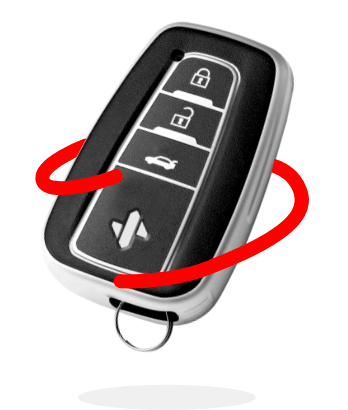Do you feel like you’re paying an outrageous premium for your homeowners insurance? Or perhaps the customer service with your existing insurance carrier or agency isn’t up to par?
There are many reasons why a homeowner would want to change their insurance company or agency. Whatever your reason, you have questions about switching insurance companies.
If you’re curious about switching your home insurance and all it entails, read on to learn:
- Can you switch your insurance mid-year?
- Why would you switch home insurance companies?
- How do you switch homeowners insurance with escrow?
- How to change home insurance carriers
CAN YOU SWITCH YOUR HOMEOWNERS INSURANCE MID-YEAR?
While policies typically last for a full year, the short answer is yes, you can switch your home insurance mid-year or before the policy is ready for renewal.
However, it’s very important to pay close attention to the dates of when one policy ends and the new begins. If your coverage lapses for even the shortest time, you could end up with a big problem.
Additionally, if you are switching in the middle of a policy, the insurance company may charge a fee or penalty. Be sure to check on this before making a switch.
The good news? Most people get a prorated refund for the time left on your policy.
WHY WOULD YOU SWITCH HOME INSURANCE COMPANIES?
There are plenty of reasons to consider switching your homeowners insurance policy. Here are just a few worthwhile reasons to make a change:
- Buying a new home
- Dislike current carrier’s customer service
- Want a better premium for the same coverage
- Want better coverage
- Want to bundle policies with the same carrier
- Want to save with better discounts elsewhere
Can switching home insurance after a claim prevent a rising premium?
If you receive a lower insurance premium quote from a new provider, it’s not because they don’t know about your claim. (Spoiler alert: they do.)
Unfortunately, once you make a homeowners insurance claim, it is most likely visible to all potential carriers via national databases. Never try to hide claims from insurance carriers; they’ll almost always be able to see them.
Is switching homeowners insurance a good idea?
Remember, not all home insurance policies are created equal. If cost is your primary reason for making a carrier switch, pay close attention to the policy details.
When you save on the insurance premium, you might lose coverage or features on the policy. In some situations, that might be OK; while in others, you won’t want to lose valuable coverage.
In other circumstances, you might have discounts you were unaware of (such as a discount for a long-standing relationship with the company). If you make a switch, you could be losing that valuable benefit.
Is there a risk involved with changing insurance companies?
The biggest potential risk when switching homeowners insurance companies is that your coverage will lapse. Not only could that cause an issue with your mortgage lender, but it could also be problematic for your bank account.
If your home insurance lapses and you need to make a claim, you’ll end up paying for any damage directly out of your own pocket.
HOW DO YOU SWITCH HOMEOWNERS INSURANCE WITH ESCROW?
If you have an escrow account alongside your mortgage, your lender helps take care of things like property taxes, mortgage insurance, and homeowners insurance.
Since your mortgage and homeowners insurance are tied closely together, you’re likely wondering how to change insurance companies when that’s the case.
The good news? You can still change your policy and carrier, and it’s still just as easy to change by following the steps below.
HOW TO CHANGE HOME INSURANCE CARRIERS
Making the switch to a new homeowners insurance carrier is relatively easy. The hard part, however, is deciding what coverage you need and finding a company that will meet all of your needs, so talk to an experienced agent.
Here is a step-by-step guide to make the switch to another insurance company or policy.
1. Determine whether switching insurance carriers is right for you.
Spend some time figuring out what’s most important for you and your family: is it time to reassess a high premium or coverage you no longer need? Have you experienced poor customer service and you’re ready for something new?
No matter what your experience, you’ll need to first weigh whether potential changes to your premium and coverage will be worth the change to a new company.
2. Decide what coverage you need.
Whether it's a pet, trampoline, or potential flood, you'll need to think of the maximum amount of coverage that will suit you, your family, and your home.
Understanding what you need prior to gathering quotes will help you stay focused on what’s most important for your new policy.
Start by examining your current coverage to see what’s included in your policy. That way, you’ll have a better idea of what you’d like to add or change. In addition, take the time to look for potential penalties or fees that will come with ending your policy early.
3. Compare companies and gather quotes.
Now it’s time to get an idea of what else is available out there. Some homeowners choose to check potential carrier ratings (and testimonials) themselves, while others decide to work with a trusted home insurance broker to acquire multiple quotes from a single source.
Compare the quotes you receive for your top 1 - 2 choices, and then…
4. Compare your policies.
It’s pointless to change policies or carriers unless it’s beneficial for you in the long run. Go through your current policy and compare it closely with a potential new policy.
Ensure you pay close attention to more than just the premium; look at:
- Actual Cash Value (ACV) or Replacement Cost Value (RCV)
- Deductibles
- Exclusions
- Policy limits
- Quality of company
- Experience of the agent or agency
5. Buy the new policy.
If everything looks good with the new policy and there are no issues with canceling the current policy, purchase the new policy first. Then, cancel your existing policy. Again, the biggest problem you could face with making the homeowners insurance switch is a potential lapse in coverage.
6. Contact your mortgage lender.
If you have an escrow with your mortgage, be sure to contact your lender immediately. They’ll likely need a copy of your new homeowners insurance declaration page, so have that on hand.
While the process of changing your homeowners insurance at any time is relatively simple, ensuring it’s the right choice for you and your home may be more challenging. Follow the six steps above once you’re ready to make the switch.
If you need help finding the best homeowners insurance coverage for the best price, start by speaking to a SimplyIOA agent at 833.872.4467 or get a homeowners insurance quote online now.










